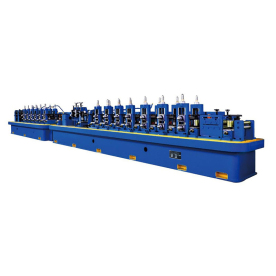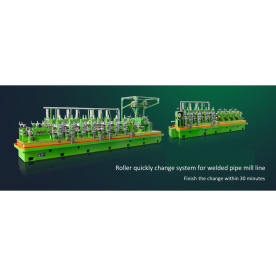[Flying saw machine]Flying Saw Machine: An Innovative Solution for Precision Cutting in Modern Manufacturing Processes
News 2024-12-21

Flying Saw Machine: An Innovative Solution for Precision Cutting in Modern Manufacturing Processes
At its core, the flying saw machine operates on a simple yet effective principle: it combines a circular saw or blade with an automated system that allows for fast and accurate cuts. Unlike traditional stationary saws that require manual handling and positioning, flying saws utilize advanced motion control technology. This allows them to move at high speeds, effectively ‘flying’ across the material while executing cuts in real-time. This capability is especially beneficial in high-volume manufacturing environments, where minimizing downtime and maximizing output are crucial.

Flying Saw Machine: An Innovative Solution for Precision Cutting in Modern Manufacturing Processes
In addition to metalworking, flying saw machines have found their applications in the construction, woodworking, and plastic industries. In construction, for example, they are utilized to cut rebar or other reinforcing materials with precise lengths needed for specific projects. Woodworkers also benefit from flying saw technology, as it enables them to achieve clean, straight cuts on large panels of wood, minimizing waste and ensuring high-quality finishes. Manufacturers of plastic products also leverage flying saws to create uniform cuts in various plastic materials, which is essential for achieving the desired quality and performance in their products.
The advantages of using flying saw machines extend beyond their cutting capabilities. One of the standout features is the reduction in waste and scrap material. Traditional cutting methods often result in excess waste due to imprecise cuts or the need for secondary operations. In contrast, flying saw machines deliver highly precise cuts, which not only reduces material waste but also lowers production costs. This efficiency is further amplified by the machine’s ability to automatically measure and adjust the cutting process, ensuring that every piece is cut to exact specifications.
Moreover, flying saw machines contribute to improved safety in the manufacturing environment. With automated systems reducing the need for manual handling and repositioning, the risk of workplace accidents associated with manual saw operation diminishes significantly. Operators can focus on monitoring the equipment and ensuring quality control rather than engaging in a potentially hazardous cutting process.
As technology continues to advance, the future of flying saw machines looks bright. Innovations like robotics and artificial intelligence are beginning to integrate with these machines, offering even greater capabilities. For instance, machines equipped with AI can learn from previous cuts to optimize and fine-tune the cutting process, enhancing both speed and accuracy. Additionally, the incorporation of IoT technology allows for remote monitoring and diagnostics, enabling manufacturers to spot issues before they become significant problems, ensuring smooth operations and minimal downtime.

